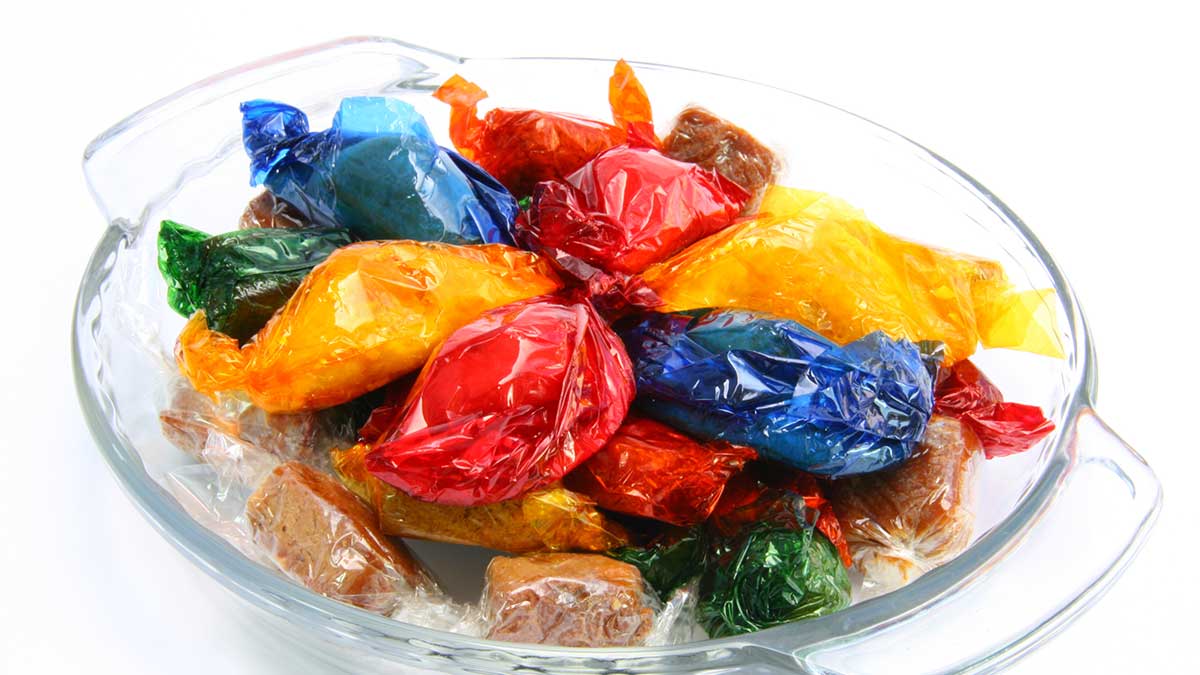
Recycling Mystery: Cellophane – Earth911
Cellophane, the crinkly film used for packaging, especially in the candy and food industries, can sometimes be biodegradable and compostable but is not recyclable. Although it shares many features of plastic wrap, such as transparency and the ability to stretch, cellophane is made from wood pulp and other plant fibers.
Learn how to identify the type of cellophane to ensure you dispose of it correctly before composting. The coatings used to add water resistance and heat sealability to cellophane can contaminate your garden soil.
How Cellophane Is Made
Cellophane uses cellulose derived from wood pulp, cotton, or other plant fibers as its primary ingredient. The manufacturing process involves dissolving cellulose in a mixture of sodium hydroxide and carbon disulfide before it is transformed into cellophane film and immersed in an acid solution, typically sulfuric acid. Several of these chemicals are harmful, and carbon disulfide contributes to photochemical smog formation and can negatively impact workers’ respiratory, neurological, and reproductive health. Food-grade cellophane is reportedly safe for consumers and BPA-free.
Is Your Cellophane Coated?
Most cellophane products today are treated with additional chemicals or coated with nitrocellulose, wax, or polyethylene. These products are referred to as coated or synthetic cellophane. Petroleum-based coatings make the products uncompostable because they leave microplastics or hydrocarbons in the soil.
Uncoated cellophane is rare, but it can be composted safely.
Check the packaging of the film you have to see if it is coated or not. You can also perform a simple test to see if your cellophane is coated: fold the material. If the fold holds, you have uncoated cellophane; if it springs back to unfolded, that’s coated cellophane.
Recyclability and Biodegradability
Uncoated cellophane can break down in a compost pile, typically within a few weeks. Research indicates that 86% of the cellulose in cellophane degrades after approximately 45 days, and up to 97% breaks down after 180 days. Community organic food waste composting programs will typically take uncoated cellophane. Add your ZIP Code to this Earth911 search to find local options. We recommend calling to confirm that the cellophane is accepted.
Coated or synthetic cellophane is not compostable due to the residual hydrocarbons it leaves in the compost. The presence of toxic carbon disulfide in coated cellophane also raises concerns regarding its compostability.
If you are unsure whether you have coated or uncoated cellophane, we recommend placing it in the garbage to avoid contaminating compost.
Where You’ll Find Cellophane
Cellophane, particularly in its biodegradable form, is gaining popularity. It is used for wrapping fresh products, baked goods, and candies and as a glossy cover for tea boxes, among other applications. Its role as a biodegradable barrier film makes cellophane suitable for manufacturing laminates, providing a more environmentally responsible alternative to traditional packaging materials.
While uncoated cellophane offers significant environmental benefits due to its compostability, coated variants pose challenges due to potential environmental hazards. As the packaging industry evolves, the need for sustainable practices becomes increasingly crucial, making the role of materials like uncoated cellophane vital in the shift towards more sustainable packaging solutions.
creditSource link




